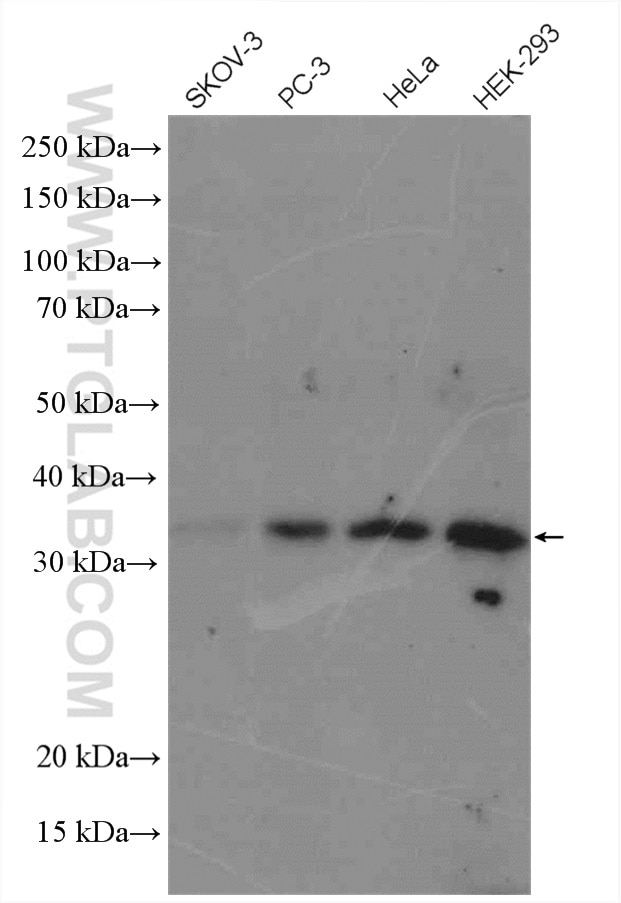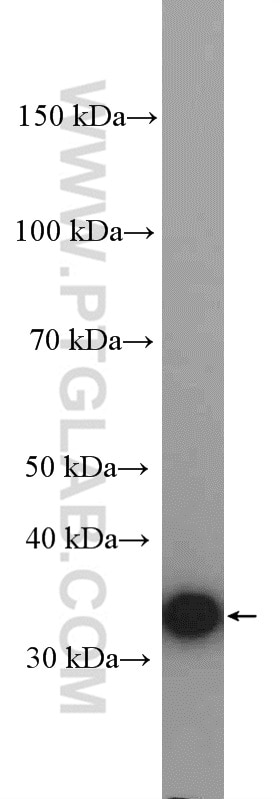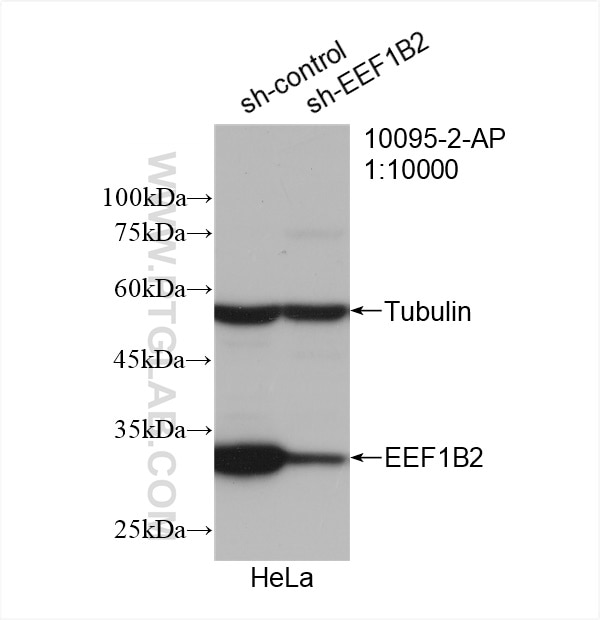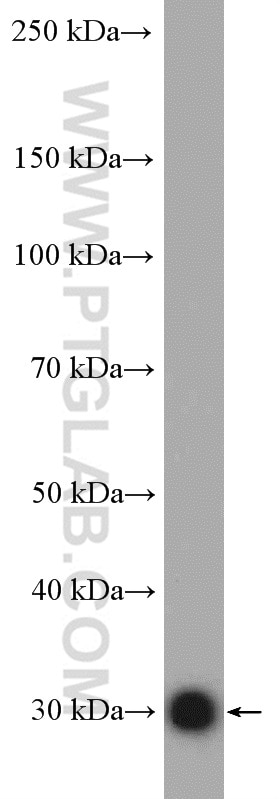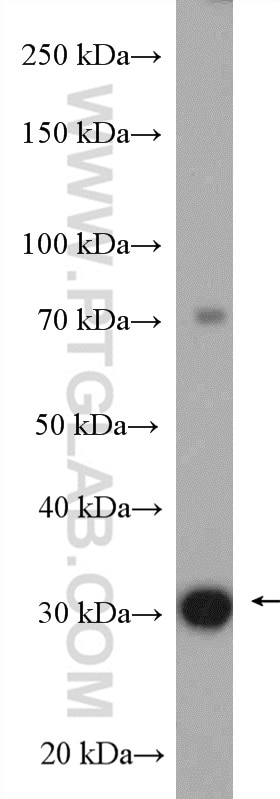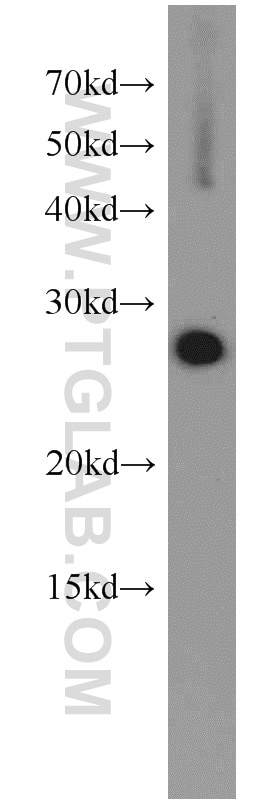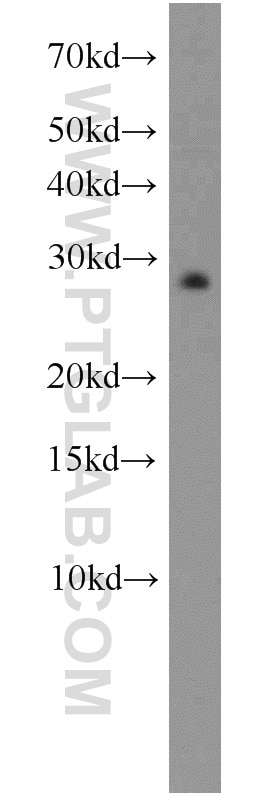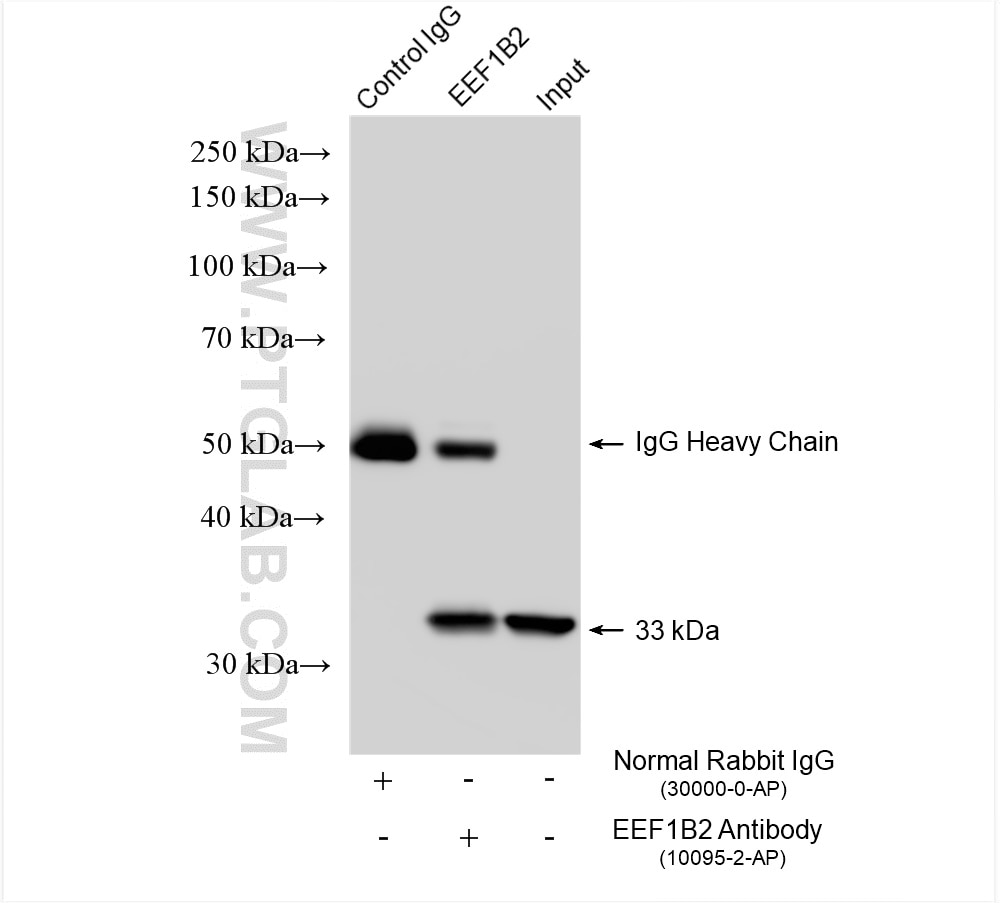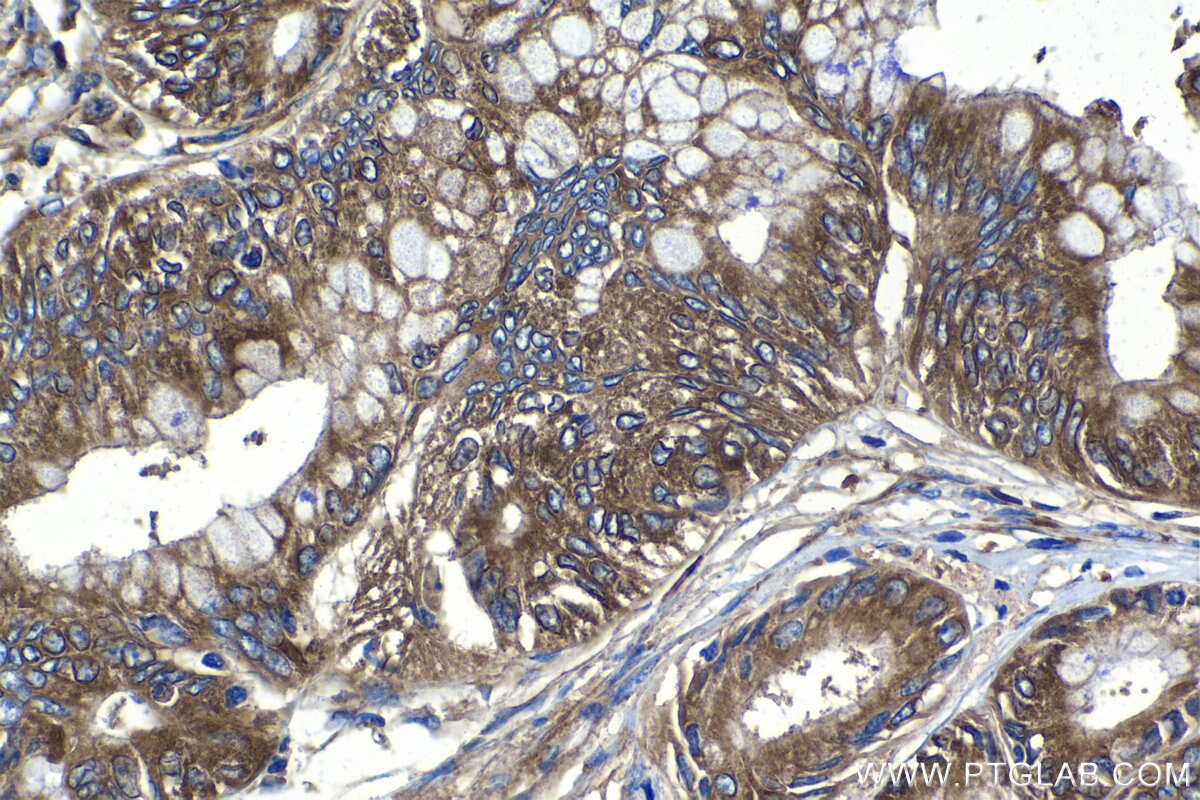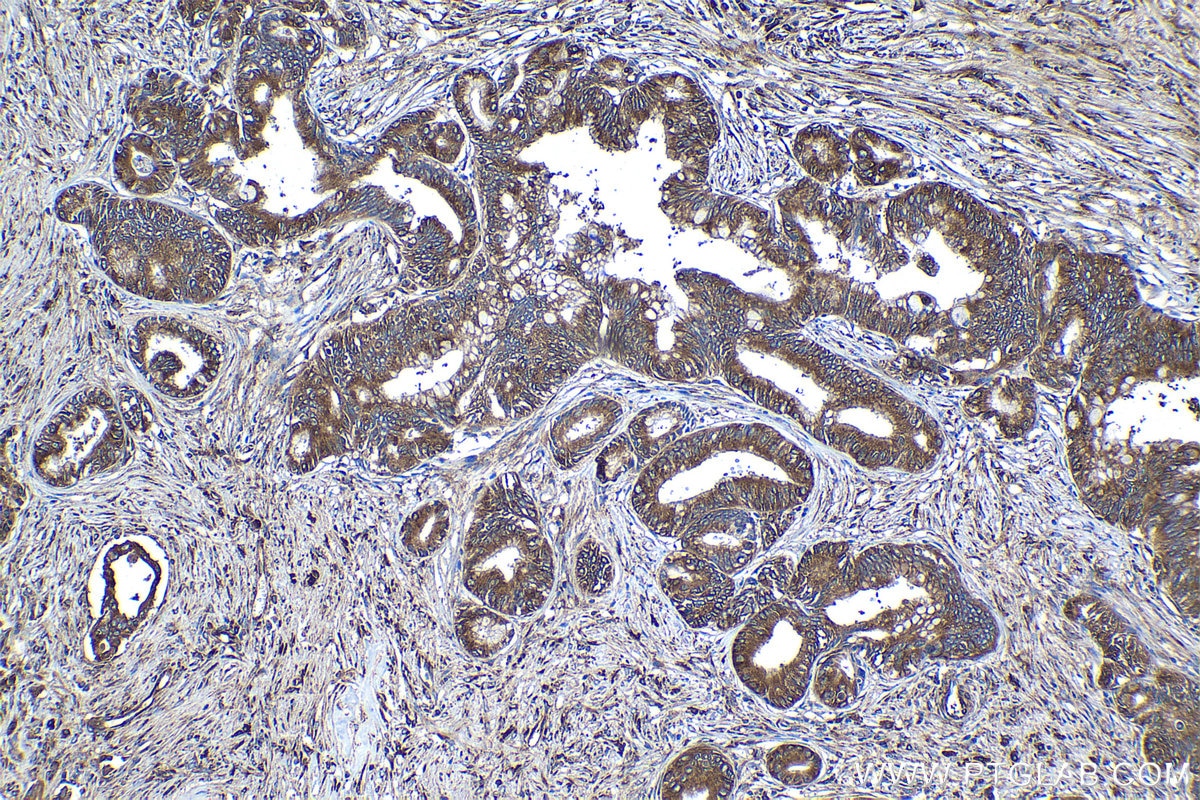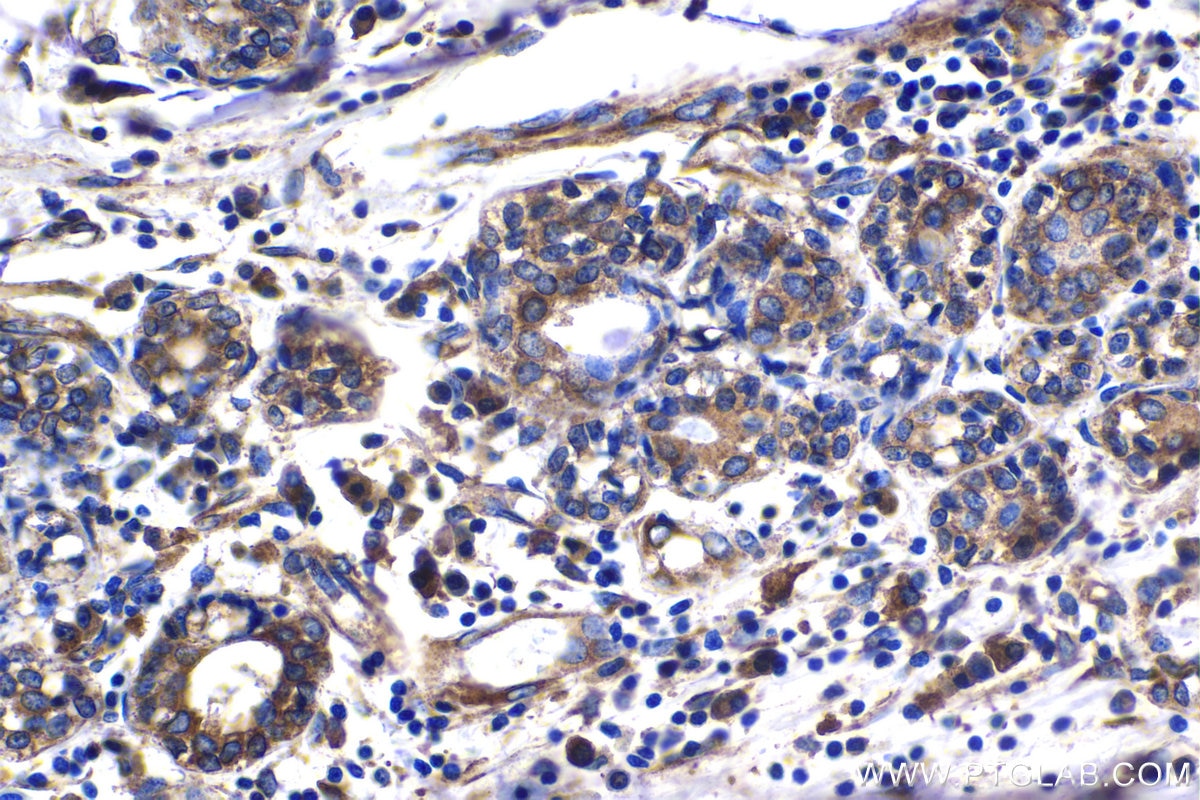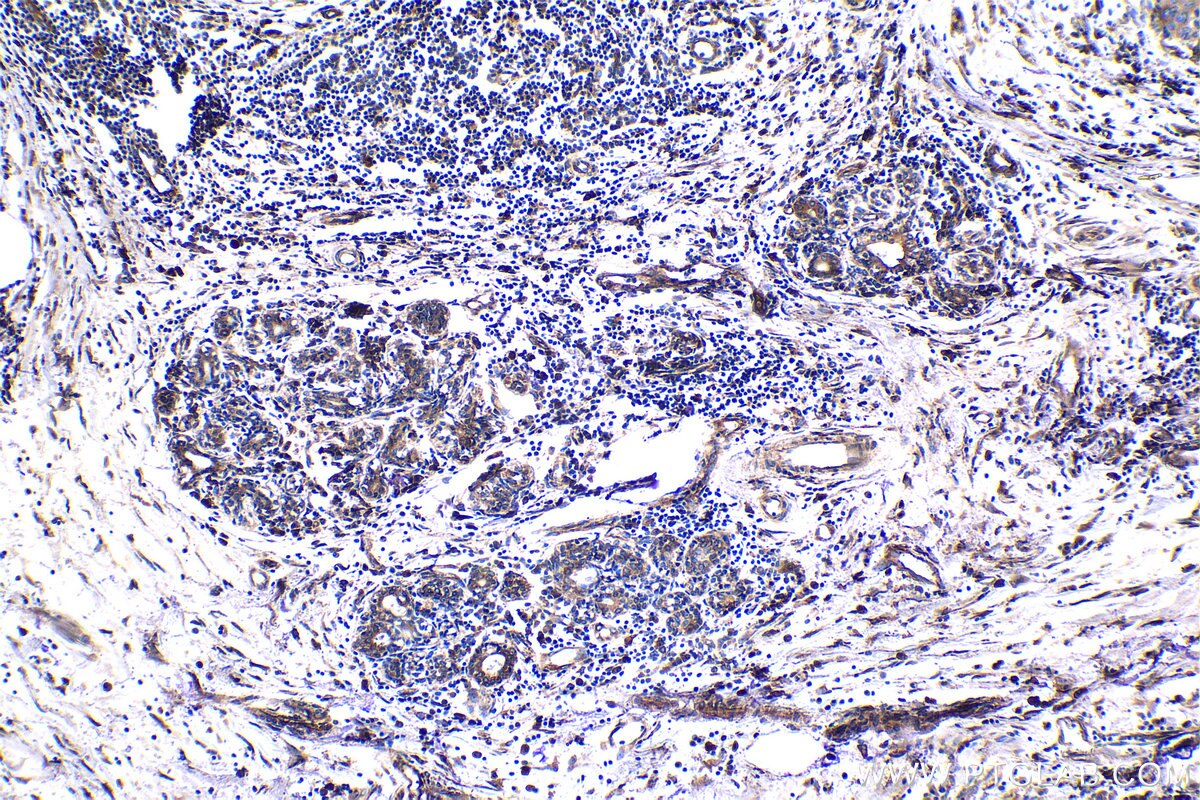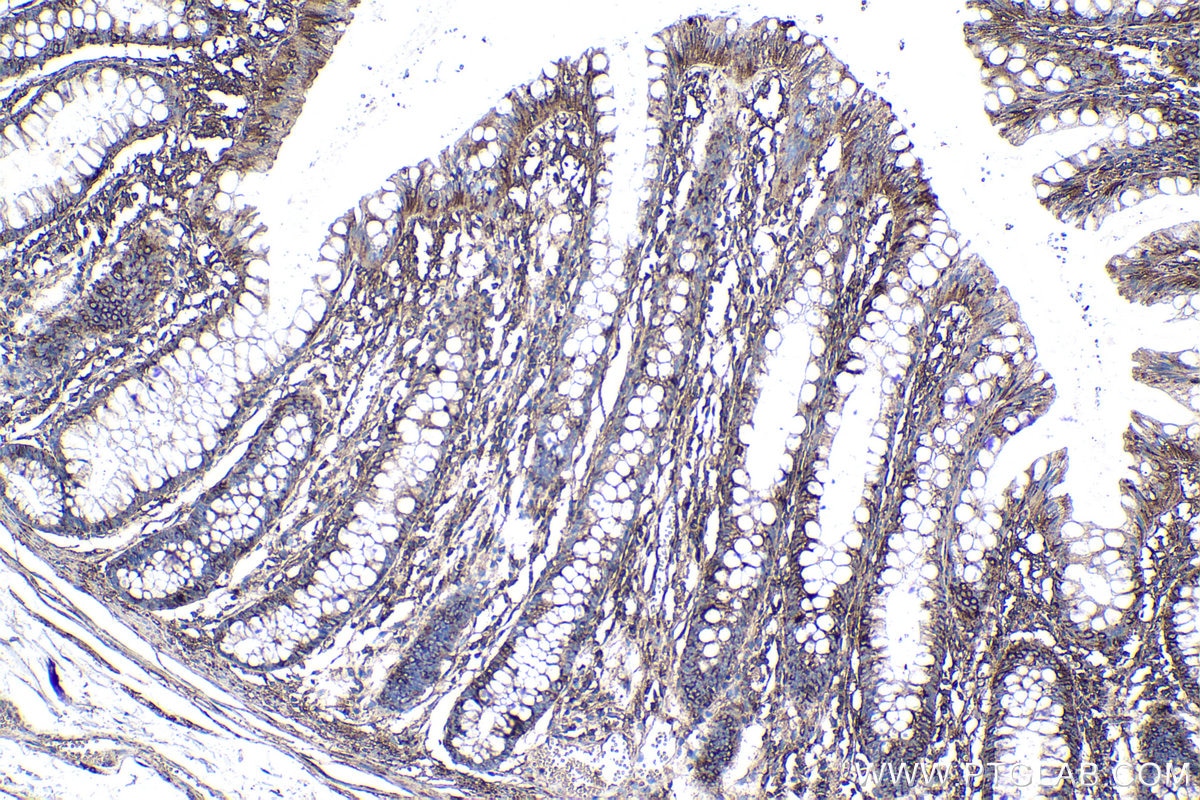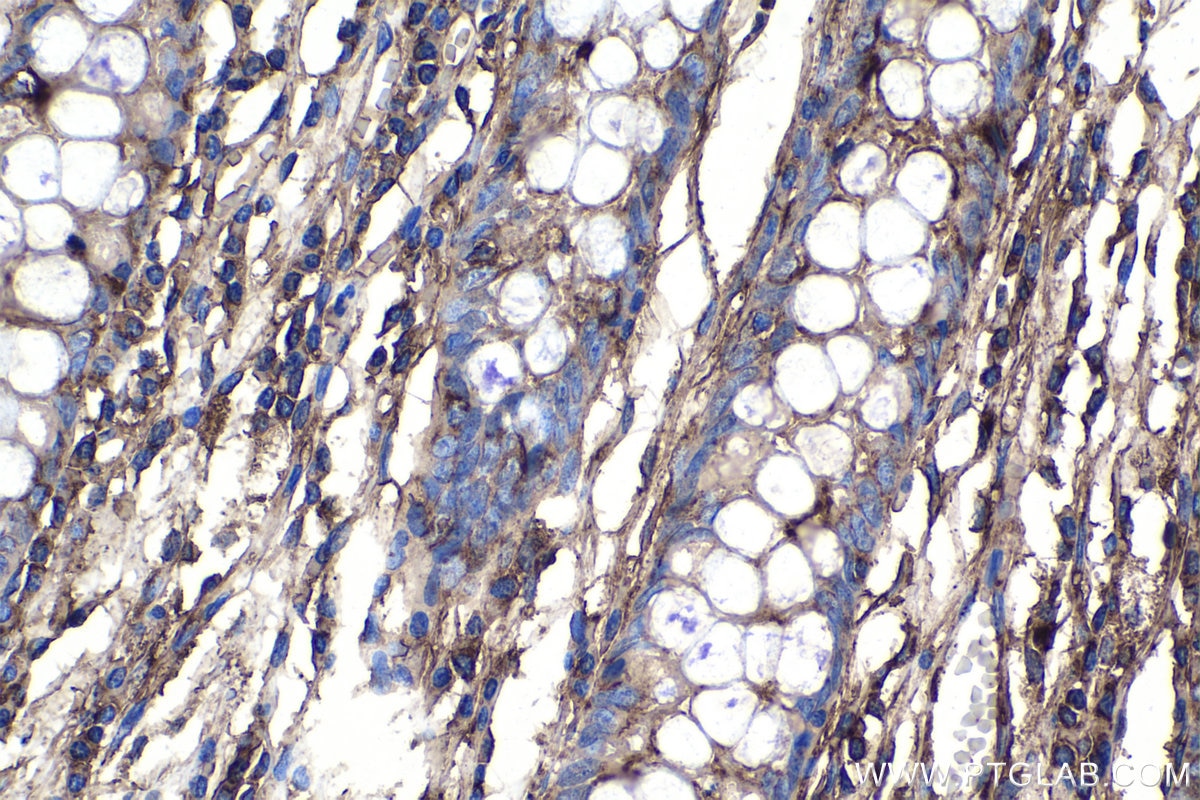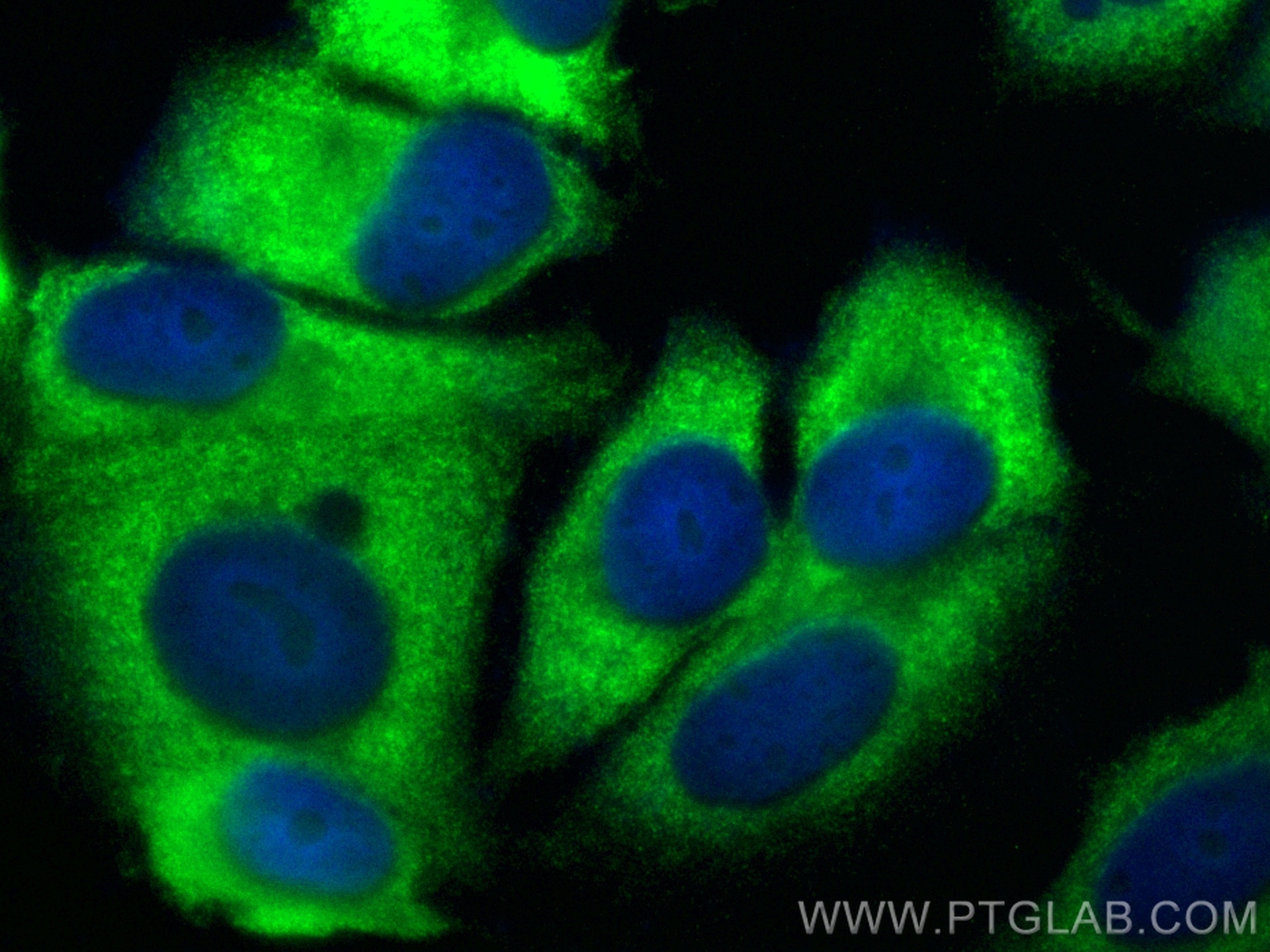- Phare
- Validé par KD/KO
Anticorps Polyclonal de lapin anti-EEF1B2
EEF1B2 Polyclonal Antibody for WB, IHC, IF/ICC, IP, ELISA
Hôte / Isotype
Lapin / IgG
Réactivité testée
Humain, rat, souris
Applications
WB, IHC, IF/ICC, IP, RIP, ELISA
Conjugaison
Non conjugué
N° de cat : 10095-2-AP
Synonymes
Galerie de données de validation
Applications testées
| Résultats positifs en WB | cellules PC-3, cellules HEK-293, cellules HeLa, cellules Jurkat, cellules SKOV-3, RAW264.7 |
| Résultats positifs en IP | cellules Jurkat, |
| Résultats positifs en IHC | tissu de côlon humain, tissu de cancer du pancréas humain, tissu de cancer du sein humain il est suggéré de démasquer l'antigène avec un tampon de TE buffer pH 9.0; (*) À défaut, 'le démasquage de l'antigène peut être 'effectué avec un tampon citrate pH 6,0. |
| Résultats positifs en IF/ICC | cellules MCF-7, |
Dilution recommandée
| Application | Dilution |
|---|---|
| Western Blot (WB) | WB : 1:2000-1:10000 |
| Immunoprécipitation (IP) | IP : 0.5-4.0 ug for 1.0-3.0 mg of total protein lysate |
| Immunohistochimie (IHC) | IHC : 1:250-1:1000 |
| Immunofluorescence (IF)/ICC | IF/ICC : 1:50-1:500 |
| It is recommended that this reagent should be titrated in each testing system to obtain optimal results. | |
| Sample-dependent, check data in validation data gallery | |
Applications publiées
| KD/KO | See 1 publications below |
| WB | See 4 publications below |
| IHC | See 1 publications below |
| IF | See 2 publications below |
| IP | See 1 publications below |
| RIP | See 1 publications below |
Informations sur le produit
10095-2-AP cible EEF1B2 dans les applications de WB, IHC, IF/ICC, IP, RIP, ELISA et montre une réactivité avec des échantillons Humain, rat, souris
| Réactivité | Humain, rat, souris |
| Réactivité citée | Humain, souris |
| Hôte / Isotype | Lapin / IgG |
| Clonalité | Polyclonal |
| Type | Anticorps |
| Immunogène | EEF1B2 Protéine recombinante Ag0135 |
| Nom complet | eukaryotic translation elongation factor 1 beta 2 |
| Masse moléculaire calculée | 25 kDa |
| Poids moléculaire observé | 30-34 kDa |
| Numéro d’acquisition GenBank | BC000211 |
| Symbole du gène | EEF1B2 |
| Identification du gène (NCBI) | 1933 |
| Conjugaison | Non conjugué |
| Forme | Liquide |
| Méthode de purification | Purification par affinité contre l'antigène |
| Tampon de stockage | PBS with 0.02% sodium azide and 50% glycerol |
| Conditions de stockage | Stocker à -20°C. Stable pendant un an après l'expédition. L'aliquotage n'est pas nécessaire pour le stockage à -20oC Les 20ul contiennent 0,1% de BSA. |
Informations générales
In eukaryotes, the translation elongation factor eEF1A responsible for transporting amino-acylated tRNA to the ribosome forms a higher-order complex, eEF1H, with its guanine-nucleotide-exchange factor eEF1B. eEF1B consists of three subunits: eEF1B alpha, eEF1B beta and eEF1B gamma. The eEF1B2 possess the nucleotide-exchange activity. Although several models on the basis of in vitro experiments have been proposed for the macromolecular organization of the eEF1H complex, these models differ in various aspects. The human eukaryote elongation factor 1 beta 2 (eEF1B2) migrated as a 30-34 kDa protein in SDS-PAGE. This antibody is a rabbit polyclonal antibody raised against residues near the N terminus of human EEF1B2.
Protocole
| Product Specific Protocols | |
|---|---|
| WB protocol for EEF1B2 antibody 10095-2-AP | Download protocol |
| IHC protocol for EEF1B2 antibody 10095-2-AP | Download protocol |
| IF protocol for EEF1B2 antibody 10095-2-AP | Download protocol |
| IP protocol for EEF1B2 antibody 10095-2-AP | Download protocol |
| Standard Protocols | |
|---|---|
| Click here to view our Standard Protocols |
Publications
| Species | Application | Title |
|---|---|---|
Nat Cell Biol The MBNL3 splicing factor promotes hepatocellular carcinoma by increasing PXN expression through the alternative splicing of lncRNA-PXN-AS1. | ||
Front Microbiol Strain-Specific Contribution of Eukaryotic Elongation Factor 1 Gamma to the Translation of Influenza A Virus Proteins. | ||
PLoS One Characterisation of Translation Elongation Factor eEF1B Subunit Expression in Mammalian Cells and Tissues and Co-Localisation with eEF1A2.
| ||
